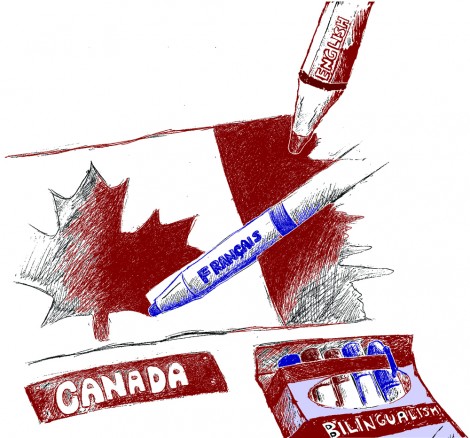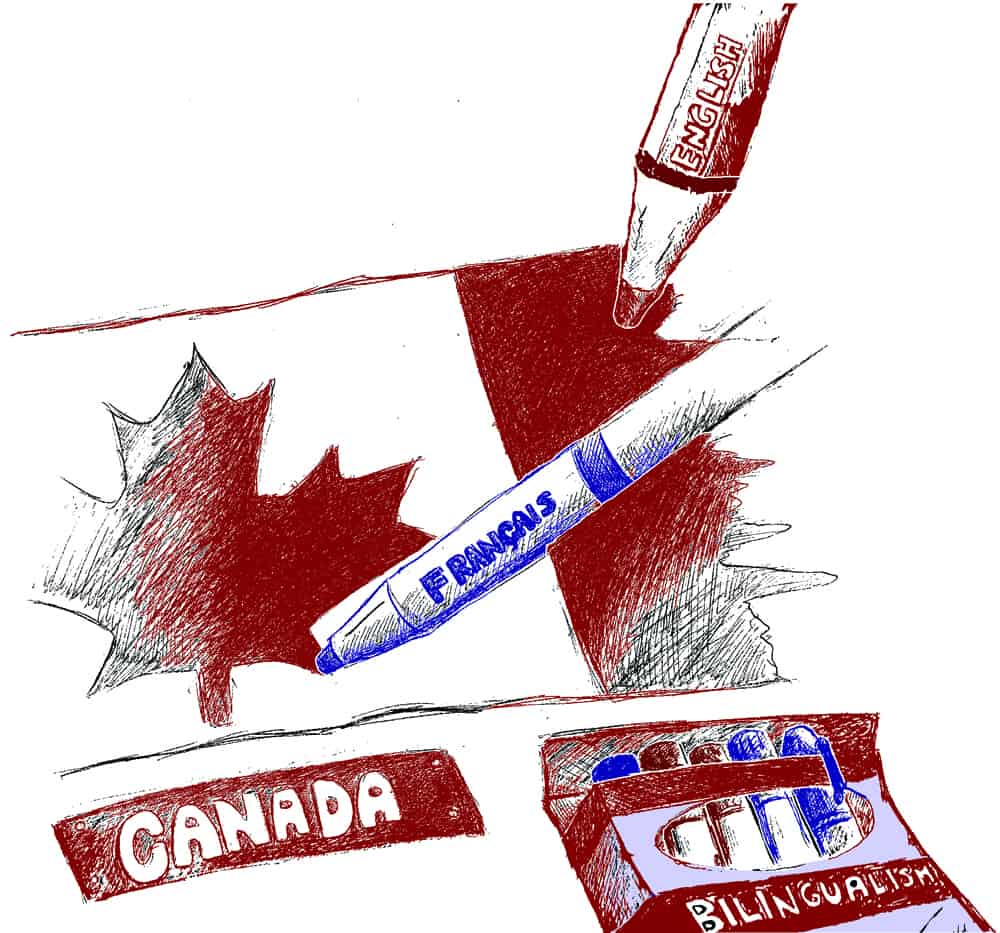The feelings that the phrase “Hello, Bonjour!” evoke are unique to Canada. As a bilingual country, Canada has its work cut out when it comes to bilingual media and translation work. Such fields are essential to the success of any corporation’s product in the public sphere at a national level.

TIMOTHY LAW/THE VARSITY
There are currently no official post-secondary programs in bilingual journalism, yet Canadian employers highly value this skill, and practice and experience are regarded as essential. English and French are both valued by large corporations, and emphasis is placed on making the relationship between the two languages both effective and symbiotic.
In an interview with The Varsity, Mike Speranzini, director of advertising and communications for General Motors (GM) Canada shared his insights on the company’s approach to creating its bilingual advertisements.
The company is constantly under pressure to accommodate its bilingual market — especially in website, print media, and commercial areas. By legislation, all information and products must be adapted for both English and French consumers. This process, however, is harder than one may expect.
Speranzini explained how his team goes about satisfying “large cultural differences between the French and English in Canada.” This often requires sociological insight into preferences that certain communities have. According to Spereanzini, French consumers, for example, typically value style more than English-Canadians do, this is evident from the cars they drive, and provincial trends in GM car sales. In order to reflect this, the GM team is pressed to portray advertisements and campaigns that are fashionable and appealing to French-Canadian markets.
Adaptation and translation is a meticulous process. Speranzini exemplified this procedure with the country-themed 2014 Chevrolet Silverado commercial that aired last September. The Québec television ad had to be adapted to localize it, making it more relatable to a French audience. A Québec artist was asked to adapt the song to French, and in addition to the language and soundtrack adaptation, footage for the ad was adapted in order to remove scenes that were not relevant to the French consumer. These changes, while subtle, can have a huge impact. As Speranzini said, the adaptation of commercials to French can be overt at times, and subtle at others, but either case, they are produced in a way that ensures maximum marketability for the consumer.
It is increasingly important for corporations to be relevant and precise in choosing their phraseology, and that is one of Speranzini’s highest priorities. Translation is a much more dynamic process than simply translating each word. Experts in the field are required to adapt subtitles to Québécois French, and GM has agencies in Montréal that assist them.
Translation has the same dynamism in print media. Corinne Cécilia, deputy director of Maison & Demeure, shared the technical aspects of adapting texts, as well as the challenges of translation work in the publishing world. “The biggest challenge is the layout itself… It constrains us,” Cécilia explained. How should a piece be translated in order for the copy to fit into a tight space? “Its main motive is to adapt the stories, while staying true to the content and ideas,” said Cécilia. It’s evident that translation requires a carefully crafted balance of high-quality writing, preserving the integrity of the original text, and ensuring that the translation fits well into a limited amount of space.
French is certainly a more difficult language than English in which to write concisely. Every grammatical rule in the French language comes with an exception. Similarly, thoughts in French generally require more words to be expressed than are required in English. Translators and proofreaders must therefore know the grammar extensively in order to cut down articles. “This is extremely important, especially in a deadline-driven business such as editing and publishing,” Cécilia remarked. Every word counts, which is precisely why translators and specialists in revision are so integral to the industry.
Clearly, bilingualism is alive and well in Canada’s media and brand-building landscape. Companies understand its importance and are attentive to it, allowing brands to thrive in both English and French Canada. The beauty of our country lies in its diversity, with language acting as an art of expression.


